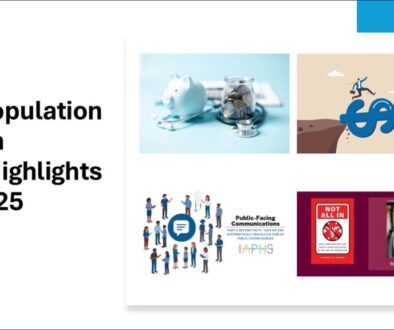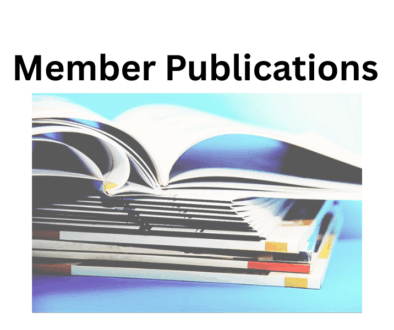Inclusive Research Methods: A Foray into the Literature, Part 2
Margaret D. Whitley, Sheri Notaro, Ai Rene Ong
In our previous post, we discussed how the Programs Working Group at the University of Michigan created the Inclusive Research Matters seminar series, and we talked about the coinciding need to define Inclusive Research Methods. In this seminar series, available free online, experts from UM and beyond discussed methodological issues that impact DEI in research. In our previous post, we justified the importance of this process and the inherent value in inclusive methodology.
In our second post here, we share works that offer frameworks and paradigms to guide scholars in approaching research in a more inclusive and actionable way. These papers also represent a broader set of experiences and a better accounting for diversity.
Following is a sample discussion of highlighted works that explore inclusive methods.
Highlighted Works
Research with People, not on People
In “The practical wisdom of inclusive research,” Nind (2017) describes inclusive research methods as a movement away from “research on people to research with them.” Nind notes that within inclusive research, communities marginalized or harmed by academic research take more important roles in the knowledge production process. Nind’s paper outlines methods and results of focus groups from the work of 60 researchers, all studying learning disabilities, who encountered complicated power dynamics, like varying “claims to authority,” questions around whose ideas were prioritized, how decisions were made, and what “good research” actually meant. Participant-researchers with learning disabilities commented that research should be meaningful to people with learning disabilities, should make their lives better, ask the right questions, and get information across effectively. This contrasted with the perspective of nondisabled academic researchers, whose primary focus was strong methodology. Nind provides questions researchers may ask themselves to determine if their inclusive research is “good,” such as whether the topic is relevant and interesting to people with learning disabilities, whether there is transparency and honesty about roles and contributions, and whether the work’s impact will be valued by people with disabilities.
Indigenous Research Paradigm
Wilson’s 2001 paper “What Is an Indigenous Research Methodology?” describes the Indigenous research paradigm and how it differs from dominant Western paradigms. Relationships are central to the Indigenous research paradigm, “not just with people or objects, but relationships that we have with the cosmos, with ideas, concepts and everything around us.” (p 177). Wilson describes this Indigenous paradigm as “coming to an agreement about a mutually understood idea,” when scholars are analyzing and creating relationships as well as ideas for themselves and their community. Wilson emphasizes that Indigenous scholars should trust their intuition. This work gives a helpful overview of basic concepts in epistemology and methodology, and Wilson touches on many paradigms, including positivism and postpositivism, critical theory, and constructivism.
Applying an Indigenous Paradigm in STI-Prevention Research
In “Mixed methods in indigenous research: Building relationships for sustainable intervention outcomes,” Chilisa and Tsheko (2014) offer an example of the Indigenous research paradigm applied in a mixed-methods intervention in Botswana to reduce the risk of sexual transmitted infection (STI). All stages of the research process, from initiating a collaboration between two universities and developing a structure for their project team, to formative research and then designing and implementing an intervention and data collection tools, were grounded in an Indigenous research approach. The study subjects were co-researchers, not just participants. The project was an NIH-funded partnership between the University of Botswana and University of Pennsylvania. In line with a collaborative model that prioritized cultural knowledge and research useful to communities, University of Botswana researchers held principal investigator and other leadership roles. In the intervention and evaluation, control participants not receiving the new HIV-STI risk-reduction intervention would instead participate in a healthy living health promotion activity that would still be beneficial, in line with the value of offering “useful experiences” to all study participants. The paper provides multiple concrete examples of what Indigenous research, particularly Indigenous mixed-methods intervention work with a cross-national partnership, can look like.
Public Health Critical Race Methodology
In their 2010 paper, “The public health critical race methodology: Praxis for antiracism research,” Ford and Airhihenbuwa offer a Public Health Critical Race praxis or framework. This framework is grounded in Critical Race Theory (CRT) and aids CRT health researchers (“healthcrits”) in not just studying racial health disparities but also working to eliminate them. The authors outlined four focuses to guide race-conscious, methodologically rigorous research. First, researchers should understand what racialization is/was like for the time period under study, bearing in mind that racism has operated in different ways at different points in time. Second, researchers should consider the interrelationships between racialization and their research project, recognizing that knowledge production is by nature subjective. Third, researchers should define constructs and measures that are specific to the context under study, given that “racism functions differently depending on the place, population, time and context.” (p 1393) Fourth, researchers should take action to address inequities, whether through critical storytelling or through direct action.
The authors also outlined ten guiding principles and compared and contrasted the conventional approach versus the Public Health Critical Race praxis approach. The authors note that the conventional approach toward racialization is to attribute effects to race, and not to racism or racialization. In contrast, among healthcrits, racialization serves as “the point of scholarly departure in defining US social problems.” (p 1395) Another principle is voice, or centering the perspectives of those who have been marginalized.
Thinking Beyond White Heteropatriarchal Families
Cross, Fomby, and Letiecq’s 2022 paper, “Interlinking structural racism and heteropatriarchy: Rethinking family structure’s effects on children in a racialized, unequal society,” examines how structural inequities affect family formation and child outcomes. Currently, much family science research advantages heteropatriarchal nuclear families and assumes that other family structures harm children’s development. This paper outlines how structural racism plays a part in constructing heteropatriarchal nuclear families. The current conceptual model cannot account for the variances in the effect of family structures within and across racial groups. This White hegemonic perspective on family wellbeing can harm already disadvantaged groups. This paper then proposes inserting heteropatriarchy and structural racism in the current conceptual model to account for their influence on child outcomes on three levels. First, heteropatriarchy and structural racism influence the type of families Black children experience (e.g., through racial profiling, Black men experience higher rates of arrest, leading to greater incidence of single-parent Black families). Second, these structures influence parental resources (e.g., lower household income due to difficulty in finding well-paying jobs after incarceration). Third, Black children are more likely to be in contact with those same systems, i.e., structural racism and heteropatriarchy, than their White counterparts are.
This paper presents several examples of measurements of structural racism or discrimination in large-scale surveys, and then proposes the integration of multi-indicator scales measuring structural racism when conducting family research. The authors urge more consideration in measuring and meaning-making relating to family demography (e.g., the use of race as a proxy measuring racism rather than an unchanging characteristic).
Life Course Mediation Framework
Finally, in their paper “Structural racism and quantitative causal inference: a life course mediation framework for decomposing racial health disparities,” Graetz, Boen, and Esposito (2022) offer a framework grounded in the life course model and Critical Race Theory to advance quantitative research about racial health disparities. The researchers argue that much of the existing research in this area does not adequately conceptualize or model the relationships between race (specifically, racialization and racism) and health. Race and racism are dynamic social constructs whose effects accumulate over time and touch many areas of people’s lives, yet researchers often erroneously model race as a static variable whose effects are independent of other predictors. Further, studies should view racism as time-varying. Via a case study, the authors apply the framework to examine the mediating pathways contributing to disparities in cardiometabolic risk. To model the relationships, they use g-formula standardization. The paper also discusses why the simplistic approaches commonly used to model race in health disparities research are inadequate and potentially misleading.
Lessons Learned
The works outlined above helped us:
- understand inclusive research methods as a holistic approach
- center perspectives that have historically been marginalized
- recognize the need to consider a research project’s potential benefit for researched communities
- examine how systems in the U.S. have benefitted certain privileged groups, and how these systems can be reformed
- understand their biases about the topics they are studying
- cultivate intersectional collaborations with diverse scholars with different types of methodological expertise
- include the communities they study in the research process
In conclusion, we aspire, as a community of scholars, to begin building a comprehensive set of inclusive research methods readings to better inform and support population health equity.








All comments will be reviewed and posted if substantive and of general interest to IAPHS readers.